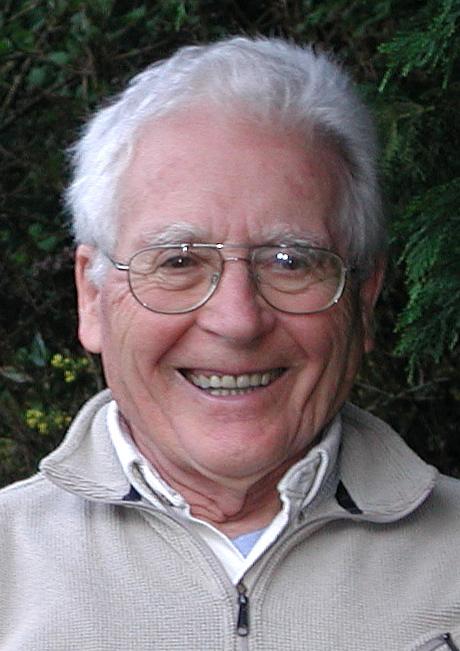Table of Contents
- Exploring the Legacy of James Lovelock in the Age of AI
- How James Lovelocks Gaia Theory Influences Modern AI Ethics
- The Integration of Environmental Science and Artificial Intelligence
- Practical Applications of Lovelocks Ideas in AI Development
- The Future of AI: Insights from Lovelock’s Vision of Sustainability
- Q&A
- To Conclude
Exploring the Legacy of James Lovelock in the Age of AI
James Lovelock, a pioneering scientist and environmentalist, is best known for his groundbreaking Gaia theory, which posits that Earth functions as a self-regulating entity. In today’s age of artificial intelligence, his ideas resonate more than ever. Lovelock’s vision encourages us to appreciate the interconnectedness of life and the planet, a concept that finds new interpretations in the context of AI technologies. As we develop intelligent systems, the question arises: how can these advancements contribute to our understanding of ecosystems?
As we delve into the implications of AI on environmental stewardship, Lovelock’s insights can guide us in creating harmony between technology and nature. By leveraging AI, we can enhance our ability to monitor ecological changes, predict climate phenomena, and develop sustainable practices. Some potential applications include:
- Predictive Modeling: Using AI algorithms to forecast environmental impacts and climate shifts.
- Smart Agriculture: Implementing machine learning to optimize resource use and minimize waste in farming.
- Habitat Monitoring: Deploying AI-powered sensors to gather real-time data on wildlife and ecosystem health.
Moreover, Lovelock’s perspective prompts us to consider the ethical dimensions of AI in relation to our planet. As intelligent systems gain autonomy, we must navigate the challenges they present while ensuring they align with ecological principles. By fostering a dialogue about the moral responsibilities of AI developers, we can aim for a future where technology not only serves humanity’s needs but also nurtures the biosphere. Embracing Lovelock’s holistic view may be crucial in paving the way for a more sustainable interaction between artificial intelligence and the natural world.

How James Lovelocks Gaia Theory Influences Modern AI Ethics
James Lovelock’s Gaia Theory posits that Earth functions as a self-regulating system where biotic and abiotic components interconnect to maintain conditions conducive to life. This holistic view has profound implications for the development and ethical considerations of artificial intelligence. By recognizing that intelligent systems should not operate in isolation, but rather in harmony with their environment, AI ethics can be reshaped to prioritize sustainability and ecological balance. In doing so, AI developers are encouraged to integrate environmental stewardship into their designs, fostering technologies that support the planet rather than deplete it.
One of the key elements of Lovelock’s theory is the emphasis on interconnectedness. Applying this to AI ethics urges developers to consider the broader impact of their technologies. As AI becomes increasingly integrated into everyday life, it’s essential to ask questions about how these systems interact with both people and the planet. The ethical frameworks emerging from Gaia Theory promote principles such as:
- Environmental consciousness: AI systems should assess their ecological footprint and aim to reduce harm.
- Social responsibility: Algorithms must prioritize the well-being of all forms of life, ensuring equitable access and benefits.
- Feedback loops: AI should adapt based on real-time data about environmental and social conditions.
To illustrate how Gaia Theory influences AI development, consider the following table, which highlights critical areas of alignment between Lovelock’s principles and AI ethics:
| Gaia Theory Principle | AI Ethical Implication |
|---|---|
| Holism | AI should consider the entire system rather than isolated parts. |
| Sustainability | AI designs must promote ecological balance. |
| Interdependence | AI must facilitate positive interactions among diverse species. |
By intertwining Lovelock’s ecological insights with AI development, developers can create algorithms that resonate with natural systems, fostering not only technological advancement but also an ethical commitment to the Earth and its inhabitants. This convergence encourages a future where AI supports sustainability and nurtures the delicate balance of life, reflecting the wisdom inherent in Gaia Theory.

The Integration of Environmental Science and Artificial Intelligence
As the urgent need for sustainable practices intensifies, the fusion of environmental science and artificial intelligence is paving the way for innovative solutions to pressing ecological challenges. By harnessing vast datasets, AI can analyze complex environmental patterns and predict future scenarios with unprecedented accuracy. For instance, machine learning algorithms can sift through satellite imagery to monitor deforestation, track wildlife populations, and assess the health of ecosystems. This capability not only enhances research but also informs policy-making, allowing for more effective and evidence-based environmental management.
Moreover, AI-driven technologies play a pivotal role in optimizing resource use and reducing human impact on the planet. Smart farming techniques utilize AI algorithms to analyze soil health, weather patterns, and crop growth, leading to efficient water use and minimized pesticide application. This synergy results in higher yields while preserving essential environmental resources. Similarly, AI is integral to the development of energy-efficient systems, such as smart grids that dynamically manage energy consumption, thus reducing greenhouse gas emissions and promoting the use of renewable sources.
Collaboration between environmental scientists and AI experts opens the door to groundbreaking research and solutions. By sharing insights and expertise, these fields can develop predictive models that respond to real-time data, thereby enhancing disaster preparedness and response strategies. For example, AI can forecast the impact of climate change on various ecosystems, thereby offering vital information to help mitigate adverse effects. Such integrative approaches not only enhance our understanding of environmental challenges but also drive actionable initiatives towards a more sustainable and resilient future.

Practical Applications of Lovelocks Ideas in AI Development
James Lovelock’s ideas, particularly the Gaia Hypothesis, offer compelling insights that can be harnessed in the realm of artificial intelligence. By viewing Earth as a self-regulating system, AI developers can adopt a holistic perspective in designing algorithms and systems that better mimic ecological processes. This approach encourages the incorporation of complex interdependencies and adaptive behaviors within AI systems, leading to more resilient and sustainable outcomes. For instance, AI models inspired by ecological interactions can enhance machine learning systems in energy usage optimization, waste management, and even urban planning.
Another practical application of Lovelock’s philosophy lies in enhancing environmental monitoring through AI technologies. Integrating Lovelock’s principles, developers can create predictive models that assess environmental health and anticipate ecological shifts. This could involve using AI to analyze vast datasets from satellite imagery and sensor networks, enabling real-time monitoring of climate change impacts and biodiversity loss. By implementing adaptive algorithms that learn from this data, systems can evolve over time, leading to more effective strategies for conservation and environmental protection.
Furthermore, Lovelock’s perspective encourages the exploration of collaborative AI systems that operate dynamically within their environments. By fostering cooperation among AI agents and encouraging them to share information akin to ecosystems’ species interactions, we can drive innovation across various sectors, including agriculture and public health. Implementing collaborative frameworks that mimic these natural processes can enhance problem-solving capabilities and efficiency, ultimately leading to solutions that are not only technologically advanced but also ecologically sound.

The Future of AI: Insights from Lovelock’s Vision of Sustainability
James Lovelock’s vision intertwines artificial intelligence with sustainability, creating a roadmap that challenges conventional thinking. Through the lens of Gaia theory, he posits that the Earth operates as a self-regulating system, suggesting that AI could play a crucial role in maintaining this balance. By leveraging advanced algorithms and machine learning, we can harness AI to analyze and predict environmental changes, optimizing resource management for a sustainable future. This would allow for proactive measures rather than reactive responses, fundamentally altering our approach to climate change.
As we stand at the crossroads of technology and ecology, Lovelock’s insights encourage us to reflect on the ethical implications of AI deployment. The integration of AI in sustainability requires a commitment to responsible innovation. Key considerations must include:
- Data privacy: Ensuring transparency in how environmental data is collected and used.
- Equitable access: Making AI solutions available to developing regions, fostering global sustainability.
- Ecological ethics: Prioritizing the health of ecosystems in AI-driven projects.
Looking forward, the synergy between Lovelock’s environmental philosophy and AI’s capabilities could redefine our relationship with nature. By incorporating predictive analytics and smart technology, we can create adaptive systems that respond dynamically to environmental shifts. For example, urban planners might use AI to optimize city layouts for energy efficiency, while farmers could utilize technology to reduce waste and enhance crop yields. The potential applications are vast, illuminating a path toward a harmonious coexistence with our planet.



0 Comments